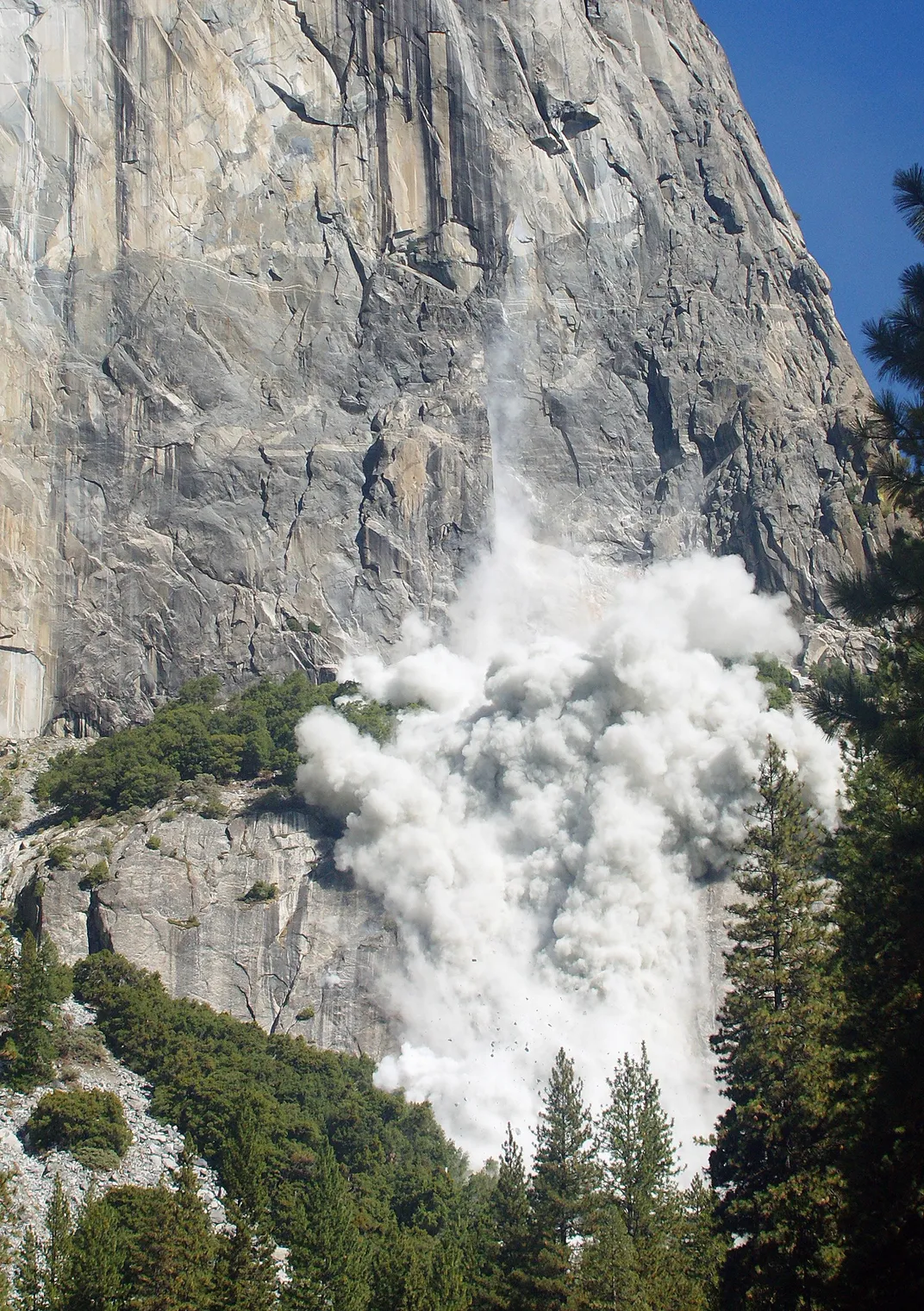Why Rockfalls Happen on Beautiful Days in Yosemite
Temperatures drive rocks to expand and contract—until one lovely day when slabs may suddenly fall
/https://tf-cmsv2-smithsonianmag-media.s3.amazonaws.com/filer/2f/44/2f44967b-5472-4860-abe9-dab991c0d835/crackmeter-installation-yosemite_blogcopy_1_1.gif)
Almost 20 years ago, on July 10, 1996, a massive rockfall caused 80,000 tons of granite to plummet toward a popular trail near Happy Isles in Yosemite National Park. The falling rocks generated an airblast that topped out at more than 250 miles per hour, toppling some 1,000 trees that damaged a nature center, destroyed a bridge and snack bar—and killed one hiker and injured several others.
Rockfalls happen about 60 to 70 times per year in Yosemite, but usually they have an obvious cause. A winter storm has blown through, or there was an earthquake. But some, like the Happy Isles incident, happen on beautiful, clear summer days for no apparent reason. Now a pair of scientists says they know what’s behind these rockfalls—it’s the warm, sunny weather itself.
“We have a lot of rockfalls in Yosemite because the cliffs are so big and steep,” says Greg Stock, Yosemite’s park geologist. And with more than 4 million visitors coming to the park every year, those rockfalls present a clear danger. “We’ve gotten lucky,” he says, because in 150 years, only about 15 people have died as a result of rockfalls.
Stock has been working to reduce the rockfall hazard in the park, moving buildings and places where hikers or visitors may congregate away from cliffs that might send rock tumbling unexpectedly. But he has also been working to explain why the rocks fall at all.
The rocks in Yosemite can peel away in giant slabs. While rock climbing in the park, Stock noticed one of these large sheets about 4-to-6 inches thick and 13 feet wide. It was still attached to the rock beneath at its highest and lowest points, but in the middle, it was separated by about four inches. “I thought, well, that would be a good one for instrumenting.” So to better understand the process, Stock and Brian Collins, of the U.S. Geological Survey in Menlo Park, California, monitored this slab for three-and-a-half years using an instrument they designed, which they call a crackmeter.
Looking a little like a scissors jack, the device records the size of the crack, which changed from hour to hour and day to day, sometimes by as much as 0.4 inch in a day. As the sun came up in the morning, and the air temperature rose, the rock would heat up and expand away from the cliff, Stock and Collins found. At night, as the temperature cooled, so would the rock, and it would contract back toward the underlying cliff. “Every day we found this movement,” Stock says.
“On top of that, there’s a seasonal signal,” he says. The slab would move progressively outward in summer and inward in winter. And from year to year, “the crack was progressively opening,” he says.
This constant movement, back and forth, destabilizes the slab. “Eventually the rock won’t be supported anymore, and it will break off in a rockfall,” Stock says.

Usually the trigger for this is something recognizable, such as a massive rainfall. But the heat of the day can be enough to cause a slab to finally reach its breaking point, Stock and Collins say. When the team looked through the pattern of past rockfalls in the park, they found that about 15 percent occur during the hottest months of the year and the hottest times of the day. That’s more than twice what would be expected through random chance, the team reports in Nature Geoscience.
“We think that this process…is probably happening almost everywhere in Yosemite Valley and this process can account for these otherwise mysterious rockfalls that are occurring on these warm, clear days when you wouldn’t expect a rockfall to happen,” Stock says.
The types of rock found at Yosemite are very common around the world, and the types of fractures in the granite there occur in other types of rock as well, notes geologist Stephen Martel of the University of Hawaii in Honolulu. This type of study is “very important for trying to understand rockfalls better,” he says.
There are still missing pieces in this geological puzzle, of course. Martel is currently studying how rainwater might contribute to the growth of cracks in rock, for example. But studying these types of rocks can be difficult, he notes. One of the classic ways to understand what is happening with a crack is to kick a rock or hit it with a hammer; the resulting sound can give a geologist clues about what is going on inside. But such an action against slabs like Stock’s climbing site “might cause the whole thing to fail,” Martel says, “and there goes your experiment.”
Temperature-induced rockfalls like the ones happening in Yosemite may become an even bigger hazard in the future, Valentin Gischig of the Swiss Competence Center for Energy Research notes in accompanying commentary. He writes, “Possibly, as the climate warms in the coming decades, thermally induced rockfalls may become even more important to hazard assessment and cliff erosion.”
/https://tf-cmsv2-smithsonianmag-media.s3.amazonaws.com/accounts/headshot/Sarah-Zielinski-240.jpg)


/https://tf-cmsv2-smithsonianmag-media.s3.amazonaws.com/accounts/headshot/Sarah-Zielinski-240.jpg)